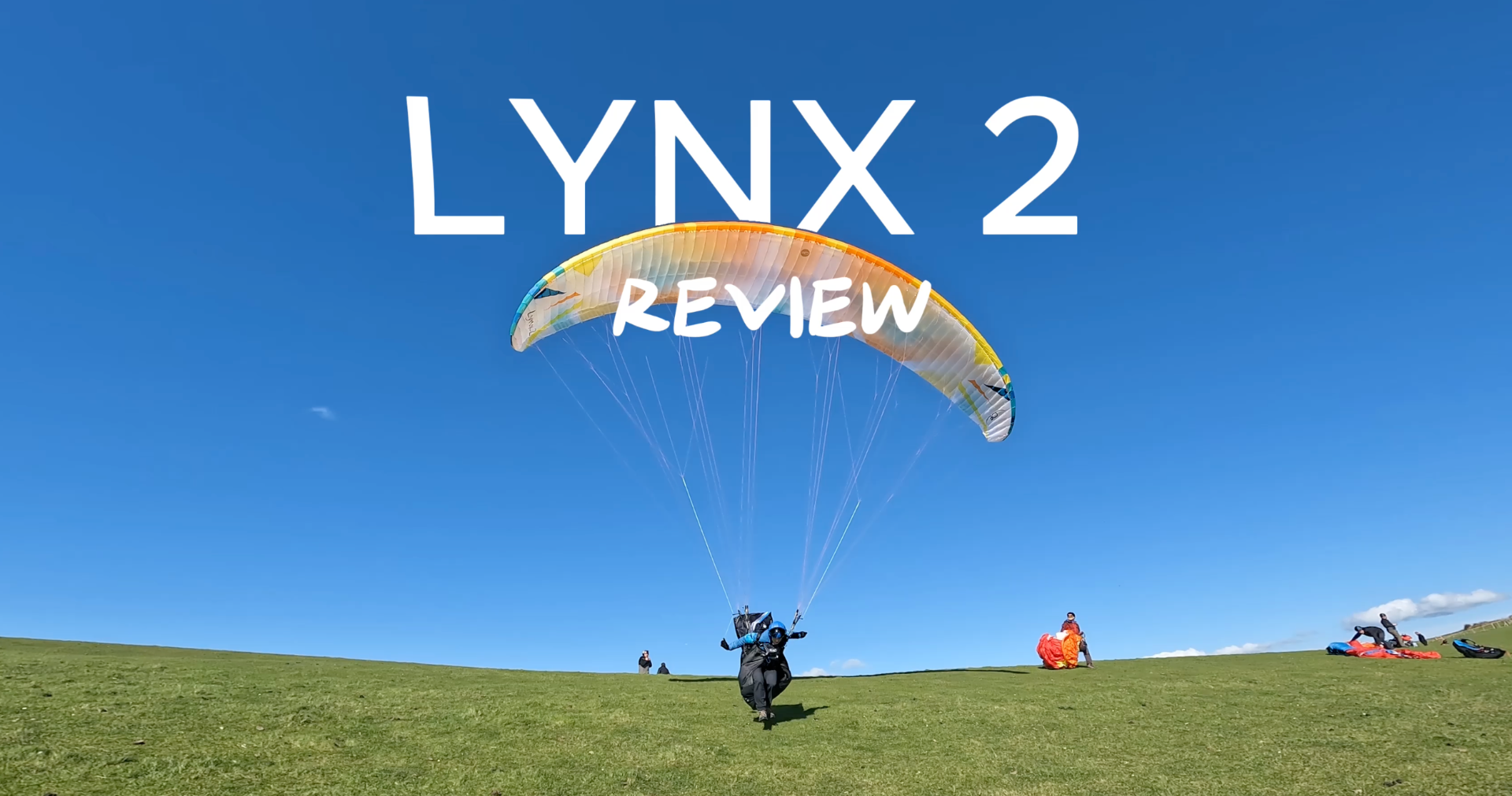
The LYNX 2 is a lightweight sports class wing from BGD. It's a two and a half liner, which means that from front to back it has three line sets in the middle (A, B and C) and two line sets at the tips (A and B). With a moderate aspect ratio for a sports class wing, 6.2, the LYNX 2 is certified EN C, using folding lines.
What the heck is a hybrid 2.5 liner anyway?
- A 3 liner has 3 rows of main lines front to back -A, B and C.
- A 2 liner has 2 rows front to back, A and B.
- A 2.5 liner has a 3 line layout in the centre of the wing and 2 lines at the tips.
So why in the sky did BGD choose to make the LYNX 2 a 2.5 liner EN C wing, rather than a 2 liner EN C, which seems to be all the rage at the moment? A 2.5 liner requires less rods to retain chordwise structural stability, making it lighter, more compact and easier to pack. BGD believes the Lynx 2's line layout also offers a wider brake range, better tolerance of low speeds, and more forgiving stall behaviour. They also feel it's also generally easier and safer to launch, ground handle and fly, compared to a 2 liner.
We tested and flew the Lynx 2 with a few different harnesses over several days in UK and Colombia in a wide variety of conditions, sometimes pretty demanding. We tested a LYNX 2 size M, weight range 75-95 kg, flat area 23 m2, glider weight 3.7kg. Flybubble Carlo flew it with all-up weights ranging from 89-95 kg, and found it flew well within that range. We didn;t get the chance to fly it lower in the weight range. We tested it with five different harnesses: the Niviuk Arrow P size M; Woody Valley Race size M and L; Ozone BV1 size ML; and Advance Weightless size M.
Launch
We found the LYNX 2 very easy to launch and ground handle, in all conditions - from nil wind to top end breezy and gusty. It's certainly one of the easiest wings to launch in the EN C class - especially when considering the 2 liners, but even when compared to some 3 liners - and even some B wings! The Lynx 2 has little tendency to either hang back or dive, or inflate from the tips and "clap hands". It doesn't require any special or very specific techniques or a perfect V layout to come up nicely, from the centre of the leading edge.
Being a light wing, it does require more careful management in strong and gusty winds than a heavier wing, but overall we found it easier to deal with than most light winds. The easy handling 12mm webbing risers certainly help here. As always with stronger winds, we recommend the best is to bring the wing up around the edge of the wind window, rather than straight up through the "power zone".
On a crowded launch, with little room to manoeuvre and highly variable winds, We found it easy to inflate the wing, even from a poor layout, and prance off into the air, dancing around a few laid our wings blocking launch, whilst many others were fluffing up their launches, left, right and centre, and some ending up in the bushes.

In the air
We've been really enjoying flying it. You can feel what's going on in the air very nicely. It's got a nice level of feedback—good communication and good feedback—but at the same time, it's very comfortable. We wouldn't say it's very calm and reassuring; it's got more feeling than that. It's kind of a nice feeling of a glider with good feedback, but without being too sporty and active. For a C-class glider, we think it's on the more easy and relaxing side, which is great.
It's a really nice glider for thermaling—from small, punchy cores to big thermals where we were in gaggles going around in huge circles. We could have gone into much nicer, smaller turns, but we think the Lynx 2 feels like a really good all-rounder for thermals. It's not something that really favors strong thermals, which we have found a little bit with some other earlier BGD gliders—they tended to favor that a bit more. It feels like a really good all-rounder and climbs really nicely. We think the climb rate is really good. It's not a really floaty glider, but it's also a glider that's made for gliding. It feels like a glider that's made for going cross-country and gliding and going places.
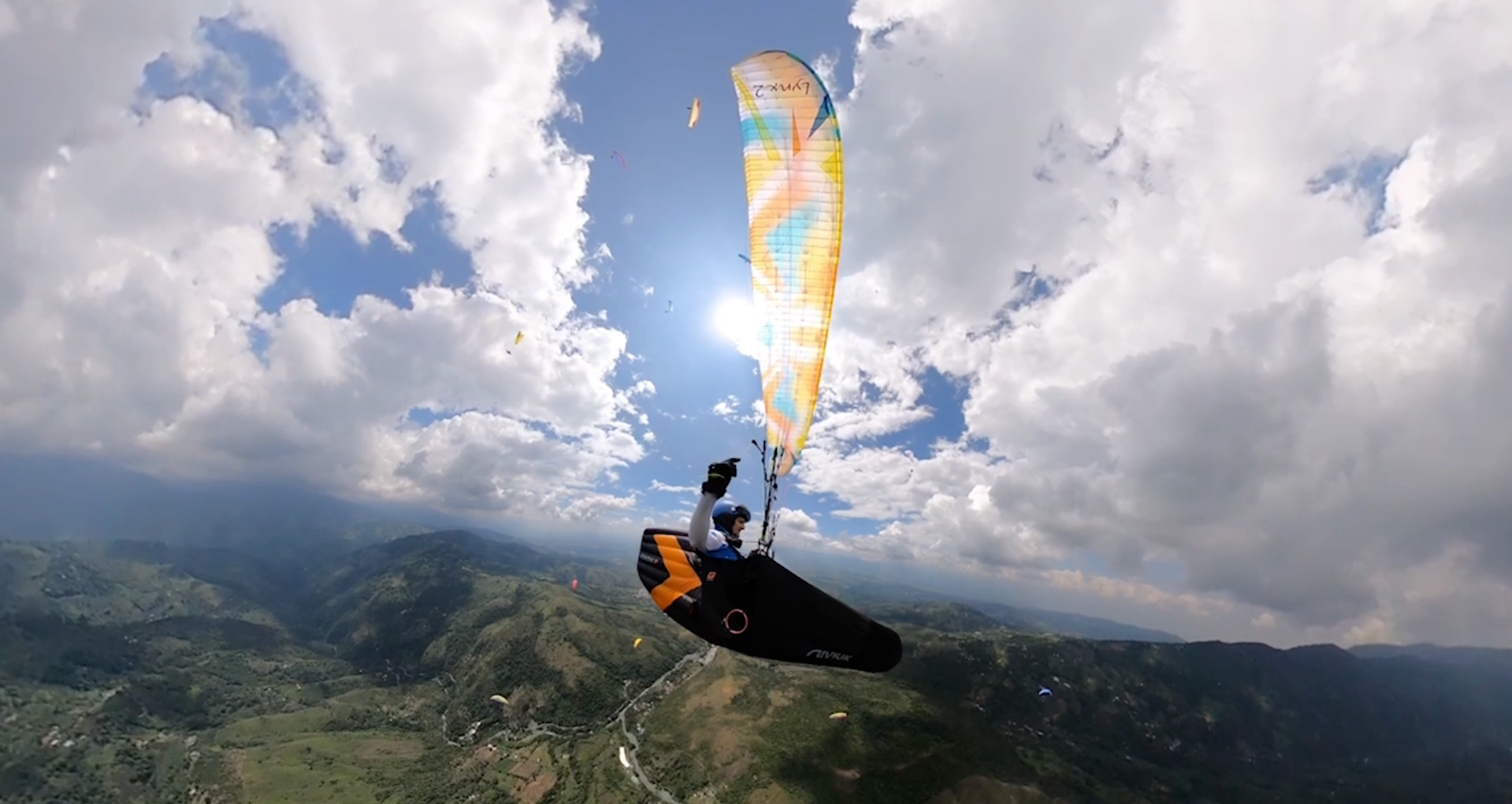
Testing the speed system more back in the UK, we estimate that from trim to full speed the increase is around 16/17 kph.
Spirals - BGD "Spiral Safety System"
We tested a few spiral dives on the Lynx 2, including a couple of deep ones. We found the spiral behaviour to be very easily controllable, entry and exit. We found no tendency for the wing to stay in when we put our hands up and stayed in a neutral sitting position (not weight shifting or steering out). Actually each time the wing came out of the spiral without much delay.
Later we found out that the Lynx 2 features what BGD calls their "innovative Spiral Safety System" which they say "helps the glider exit automatically from the deepest spirals on its own without any pilot input." We don't know if this is what made the wing behave so well coming out of the spiral but if so then it works!
Comparisons with other wings
Both in Colombia and the UK we had the opportunity to fly closely with many different wings, of all levels. Compared to other wings we've tested and flown against… We feel the LYNX 2 has a noticeable performance advantage in terms of glide and speed over even the best-performing current high B wings - the IOTA DLS, Ikuma 3, MENTOR 7, Rush 6 and MAESTRO 2. Quite similar performance overall to the best performing current EN C 3 and 2.5 liners - the SIGMA 11, CURE 2, Artik 6, Delta 4, CAYENNE6, SAVAGE and Queen 3. Quite similar also to the Volt 4, Bonanza 3, CODEX and MINT, but we feel these may have a slight advantage when fully accelerated. We feel the best performing EN C 2 liners We've tested - the Artik R, Photon, SCALA 2, X2C and Volt 5 - have a noticeable performance advantage, even at trim but especially accelerated. In terms of handling, compared with other sports class wings, to give an idea, we found the Lynx 2 more agile than the CURE 2, Delta 4, SAVAGE, CAYENNE6, Volt 4, CODEX, MINT, Photon and Volt 5. It has similar agility to the Bonanza 3 and Queen 3. Not quite as agile as the SIGMA 11, ALLEGRO, Artik 6, Artik R, SCALA 2 and X2C.
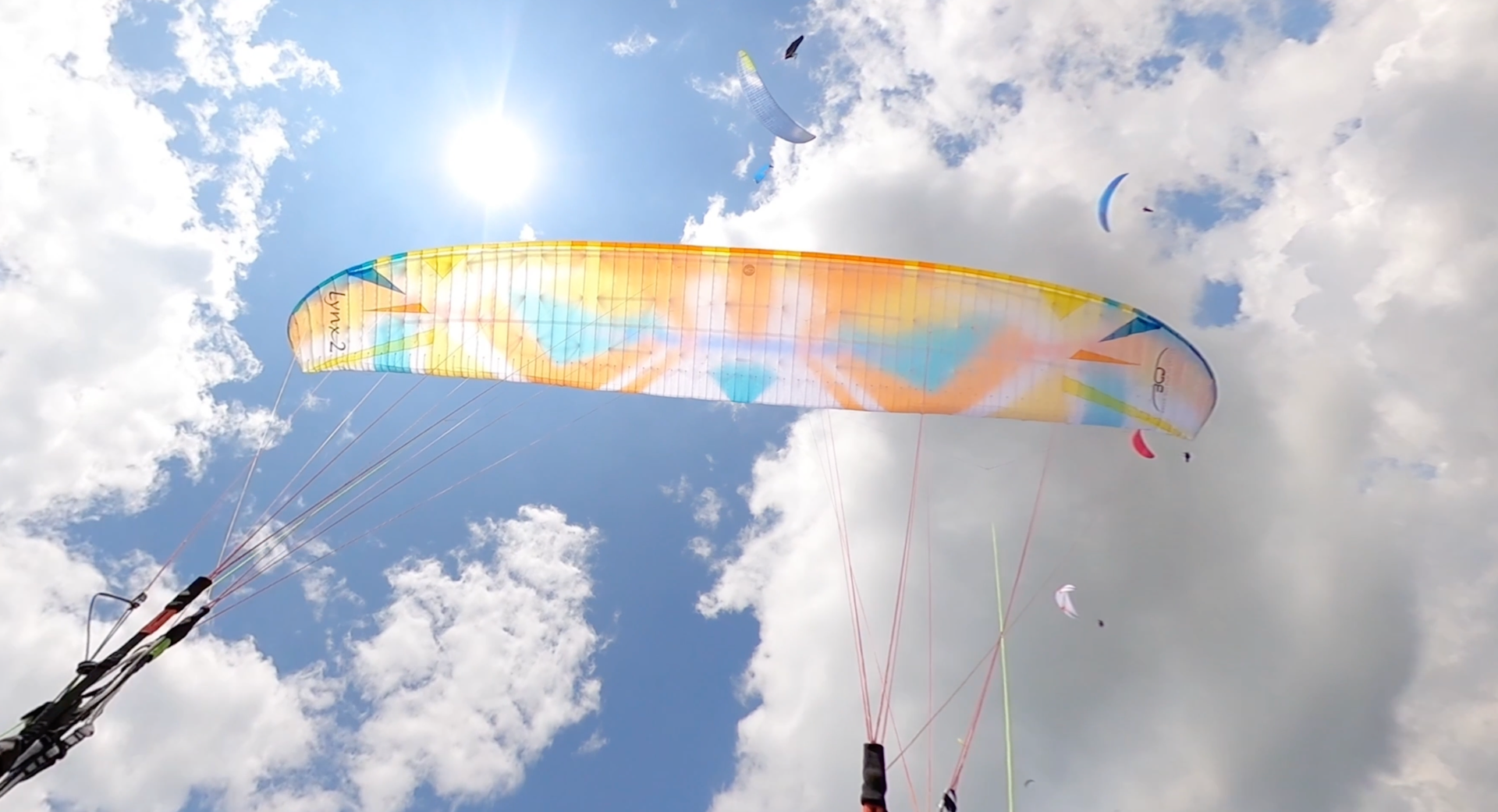
Construction
Due to the light materials and construction, including relatively short plastic rods only in the leading edge, the LYNX 2 packs down pretty light and compact. For comparison with other similar wings, it's lighter and more compact size for size than the Gin Camino, Ozone Alpina 4 and Triple Seven Q-light 3. Similar to the Supair SAVAGE. Not quite as light and compact as the PHI ALLEGRO light, PHI SCALA 2 light or Skywalk SPICE2.
As you'd expect for the class, the lines are all fully unsheathed, except the lower brake lines We've glad BGD chose to sacrifice a tiny bit of weight with 12mm Kevlar-reinforced webbing risers, which are far nicer to handle and more dimensionally stable than the shoelace- spaghetti- style Dyneema cord risers. We found the risers generally pleasant and easy to handle, and the construction seems just right to me - not too skimpy nor over-engineered.
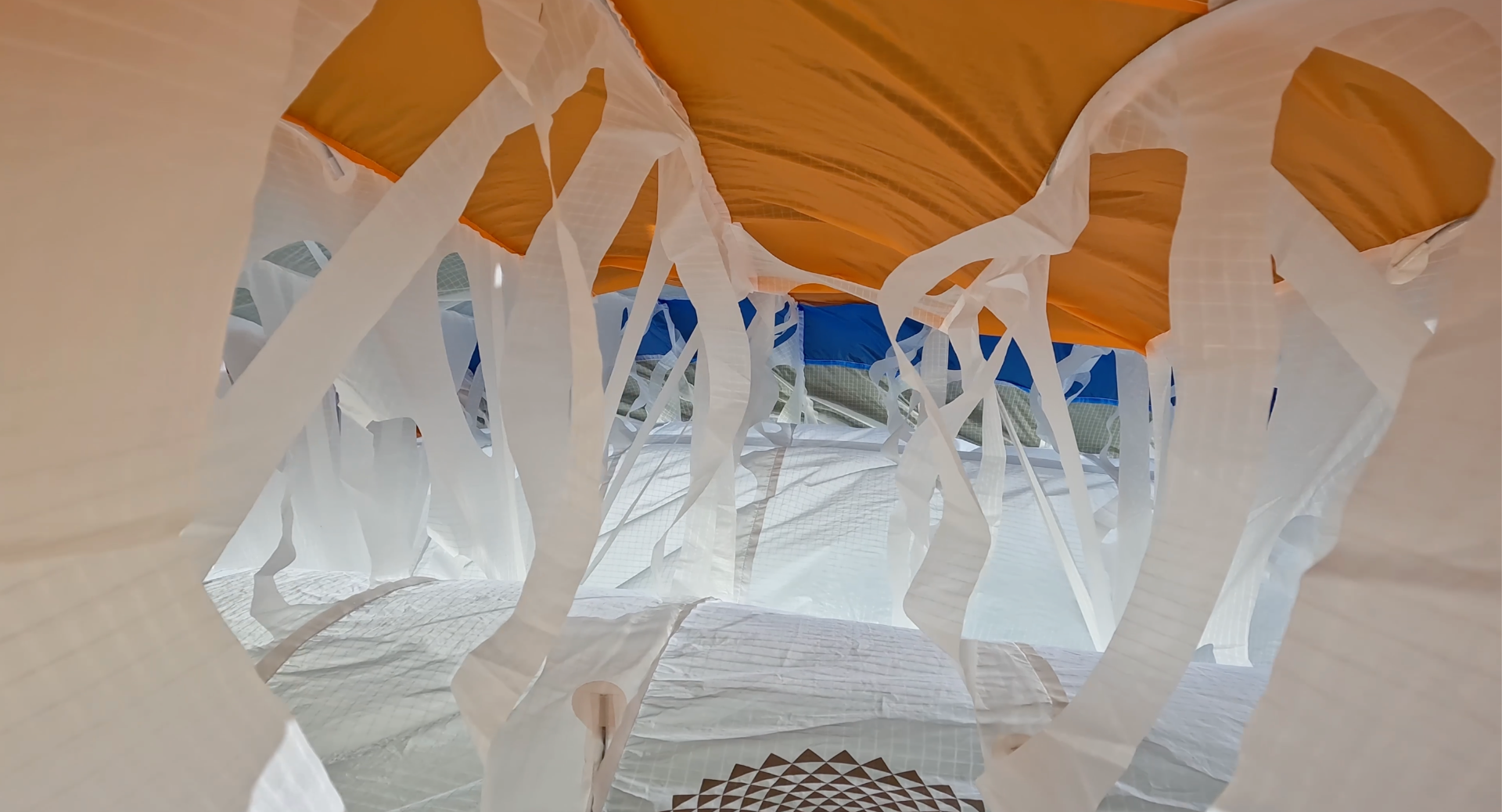
Who's it for?
Pilots looking for a light yet durable, compact and easy-packing sports class wing with mid C pilot demands, very nice handling and excellent all-round XC performance. Suitable for pilots ready to upgrade from a high B wing. Pilots wanting to downgrade from a high C or D wing, still wanting excellent XC performance but choosing to shift their focus more on enjoyment, less on performance.
Competitions
Although the Lynx 2 is not the out-and-out top performer in the serial class it offers excellent handling and performance - including good speed - and lower pilot demands than the top performers so it's a great wing for taking part in serial-class competitions like the SRS. If you're gunning to win you might do it on the Lynx but if you wanted to put all your ducks in your favour then you'd have to fly one of the top performing EN C 2-liners, whether you wanted to or not. Since they're not excluded, you might have to get a torpedo harness too, whether you wanted to or not. And of course, being light and compact, and easy to launch in all (launchable) conditions, the Lynx 2 is an excellent wing for hike and fly events and competitions, especially serial class ones.
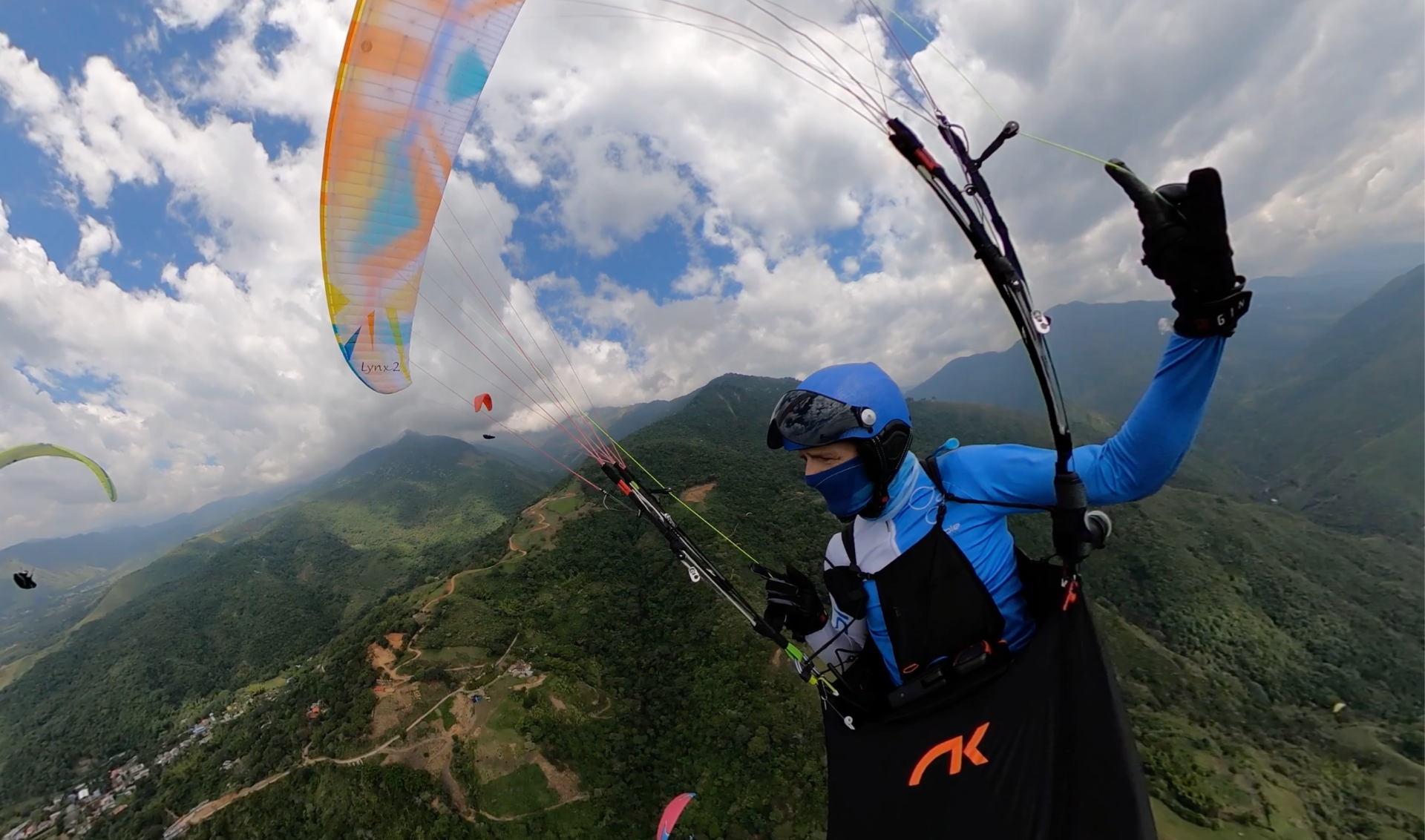
Package
The wing includes a backpack, concertina bag, riser bag and compression strap.
Nowadays most brands no longer include a backpack with their wings, because this is what most pilots want. We think this is the best. Pilots can choose the backpack they like best for their requirements and all of their gear, and don't feel like they're paying for something they don't need or want. The BGD backpack is pretty good, not too heavy or bulky, so if you don't already have a backpack it could be a welcome addition. Otherwise it could be used for transport, and sold with the wing later - if you can still find it! ;-)
The concertina bag is quite light and compact. It's simple to use but a bit basic, with only one strap near the leading edge, a bit too high up, to help you pack. This is fine, but we prefer bags with 3-4 straps. The riser bag is supplied separately to give you the choice of using it. Fine, but we prefer a simple riser pocket or flap, for if we want to disconnect wing from the harness.
We might be slightly exaggerating but the included compression strap weighs nearly as much as the glider! ;-) Ok it doesn't really weigh anything like the glider :) - but it is ridiculously over-engineered! It looks like you could tow a truck with it! We guess this hasn't risen to the top of the to-do list yet! ;-)
Summary
Overall, with the Lynx 2, we felt like it's a really nice all-rounder in the C-class. It's got very nice handling, good agility, and is really pleasurable to thermal. It has a very good climb rate and glide. So, if you're looking for an all-rounder, it's a fantastic choice, with really nice launch characteristics and overall characteristics.
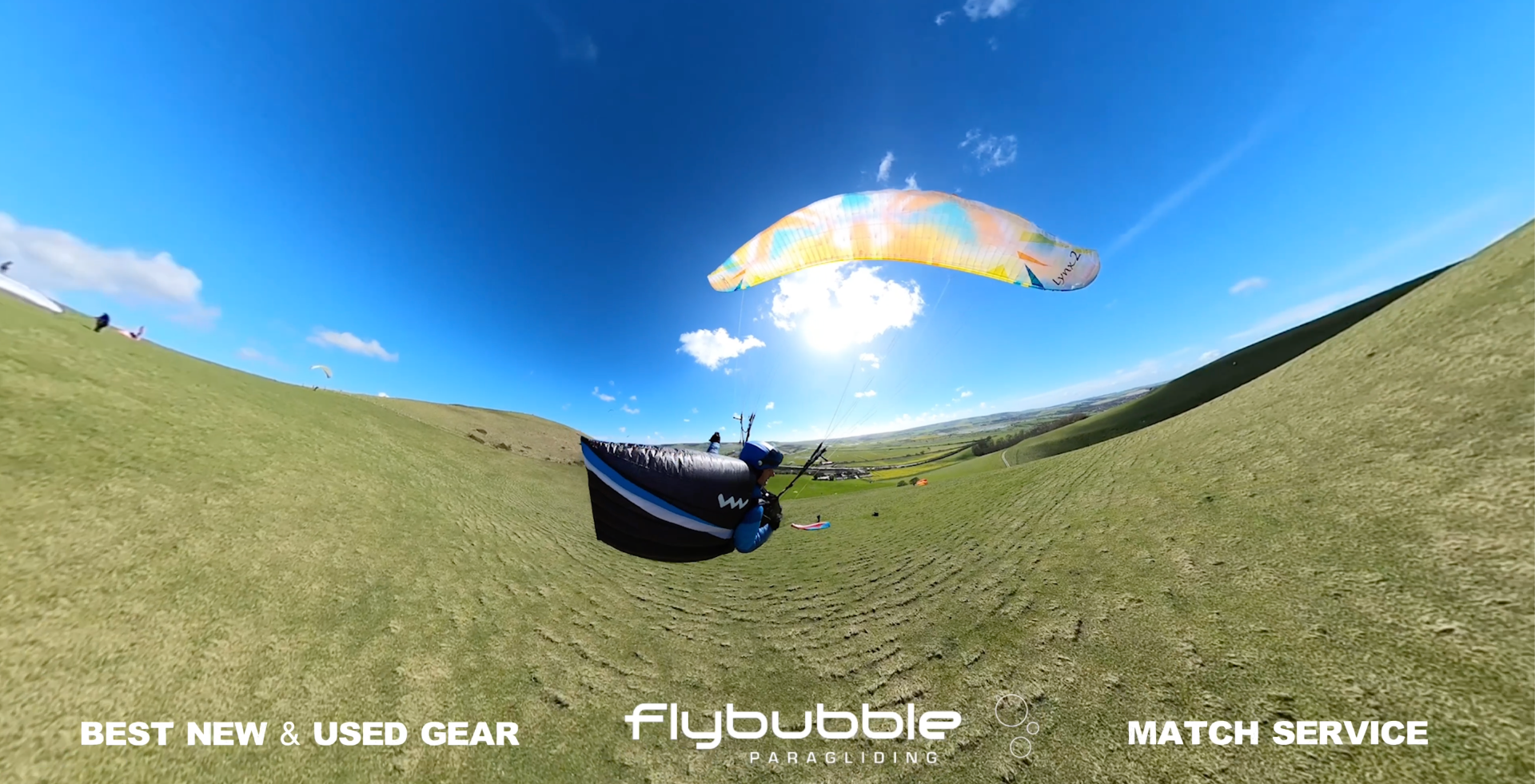
BGD LYNX 2 Video review
Brought to you by Flybubble
Like what we do? The best way to thank and support us is to buy gear from us and recommend us to others
